VMware Auto Deploy Configuration in vSphere 6.5
The architecture of auto deploy has changed in vSphere 6.5, one of the main difference is the ImageBuilder build in vCenter and the fact that you can create image profiles through the GUI instead of PowerCLI. That is really good news for those how is not keen on PowerCLI. But let’s go throgh the new configuration process of Auto Deploy. Below I gathered all the necessary steps to configure Auto Deploy in your environment.
- Enable Auto Deploy services on vCenter Server. Move to Administration -> System Configuration -> Related Objects, look for and start fallowing services:
- Auto Deploy
- ImageBuilder Service
You can change the startup type to start them with the vCenter server automatically as well.
Caution! In case you do not see any services like on the screan below, probably vmonapi and vmware-sca services are stopped.
To start them, log in to vCenter Server through SSH and use fallowing commands:
#service-control – -status // to verify the status of these services
#service-control – -start vmonapi vmware-sca //to start services
Next, go back to Web Client and refresh the page.
- Prepare the DHCP server and configure DHCP scope including default gateway. A Dynamic Host Configuration Protocol (DHCP) scope is the consecutive range of possible IP addresses that the DHCP server can lease to clients on a subnet. Scopes typically define a single physical subnet on your network to which DHCP services are offered. Scopes are the primary way for the DHCP server to manage distribution and assignment of IP addresses and any related configuration parameters to DHCP clients on the network.
When basic DHCP scope settings are ready, you need to configure additional options:
- Option 066 – with the Boot Server Host Name
- Option 067 – with the Bootfile Name (it is a file name observed at Auto Deploy Configuration tab on vCenter Server – kpxe.vmw-hardwired)
- Configure TFTP server. For lab purposes I nearly always using the SolarWinds TFTP server, it is very easy to manage. You need to copy the TFTP Boot Zip files available at Auto Deploy Configuration page observed in step 2 to TFTP server file folder and start the TFTP service.
At this stage when you are try to boot you fresh server should get the IP Address and connect to TFTP server. In the Discovered Hosts tab of Auto Deploy Configuration you will be able to see these host which received IP addresses and some information from TFTP server, but no Deploy Rule has been assigned to them.
- Create an Image Profile.
Go to Auto Deploy Configuration page -> Software Depots tab and Import Software Depot
Click on Image Profiles so see the Image Profiles that are defined in this Software Depot.
The ESXi software depot contains the image profiles and software packages (VIBs) that are used to run ESXi. An image profile is a list of VIBs.
Image profiles define the set of VIBs to boot ESXi hosts with. VMware and VMware partners make image profiles and VIBs available in public depots. Use the Image Builder PowerCLI to examine the depot and the Auto Deploy rule engine to specify which image profile to assign to which host. VMware customers can create a custom image profile based on the public image profiles and VIBs in the depot and apply that image profile to the host.
- Add Software Depot.
Click on Add Software Depot icon and add custom depot.
Next point in the newly created custom software depot select Image Profiles and click New Image Profile.
I selected the minimum required VIBs to boot ESXi host which are:
- esx-base 6.5.0-0.0.4073352 VMware ESXi is a thin hypervisor integrated into server hardware.
- misc-drivers 6.5.0-0.0.4073352 This package contains miscellaneous vmklinux drivers
- net-vmxnet3 1.1.3.0-3vmw.650.0.0.4073352 VMware vmxnet3
- scsi-mptspi 4.23.01.00-10vmw.650.0.0.4073352 LSI Logic Fusion MPT SPI driver
- shim-vmklinux-9-2-2-0 6.5.0-0.0.4073352 Package for driver vmklinux_9_2_2_0
- shim-vmklinux-9-2-3-0 6.5.0-0.0.4073352 Package for driver vmklinux_9_2_3_0
- vmkplexer-vmkplexer 6.5.0-0.0.4073352 Package for driver vmkplexer
- vsan 6.5.0-0.0.4073352 VSAN for ESXi.
- vsanhealth 6.5.0-0.0.4073352 VSAN Health for ESXi.
- ehci-ehci-hcd 1.0-3vmw.650.0.0.4073352 USB 2.0 ehci host driver
- xhci-xhci 1.0-3vmw.650.0.0.4073352 USB 3.0 xhci host driver
- usbcore-usb 1.0-3vmw.650.0.0.4073352 USB core driver
- vmkusb 0.1-1vmw.650.0.0.4073352 USB Native Driver for VMware
But the list could be different for you.
- Create a Deploy Rule.
- Activate Deploy Rule
- That’s it, now you can restart you host, it should boot and install according to your configuration now.




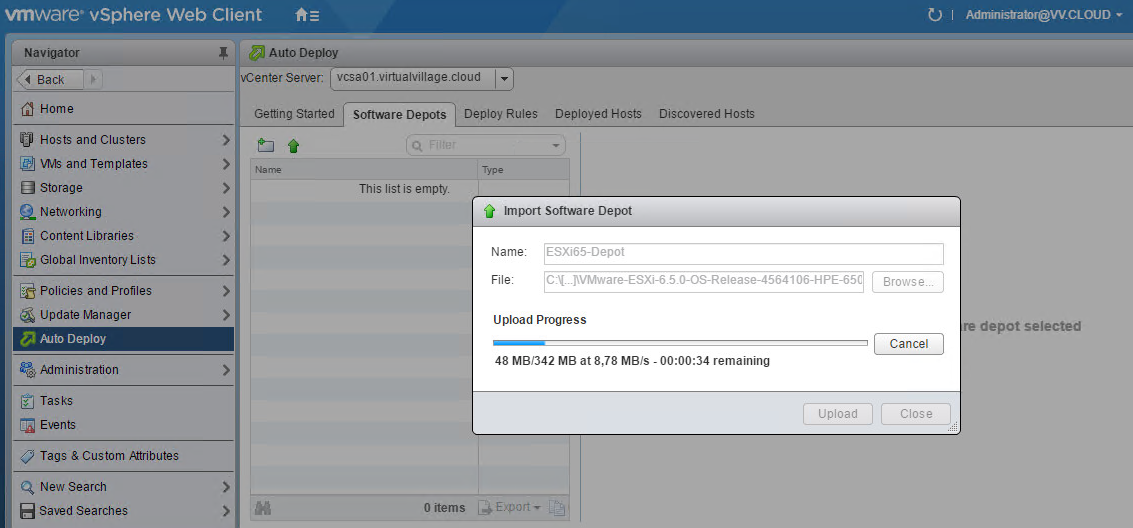

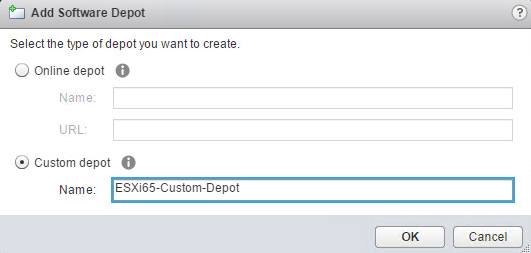
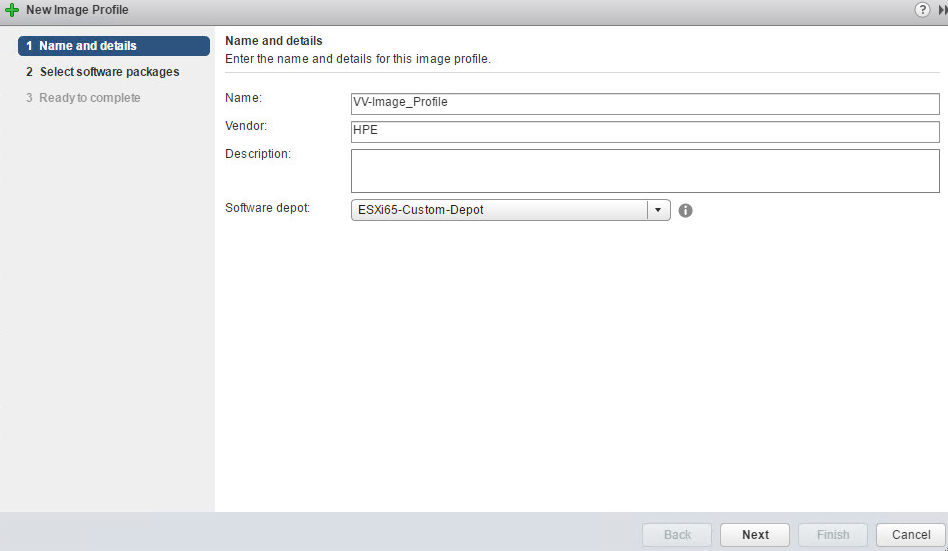
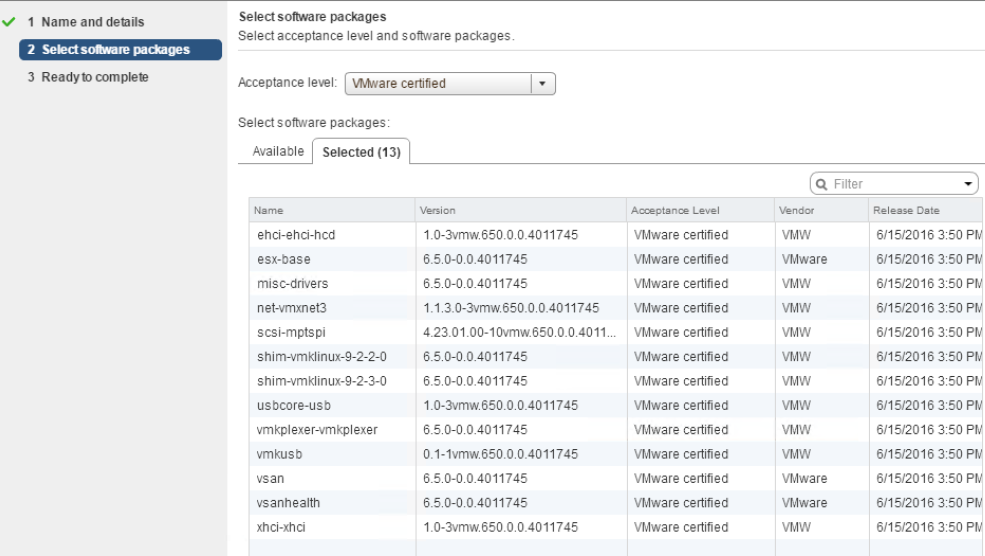

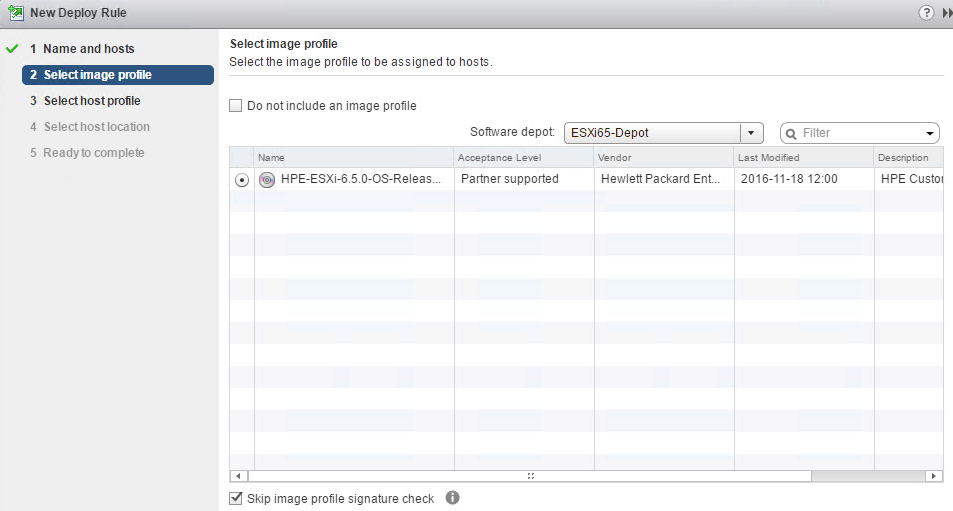


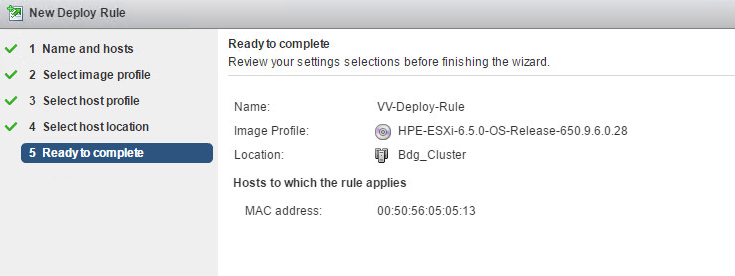
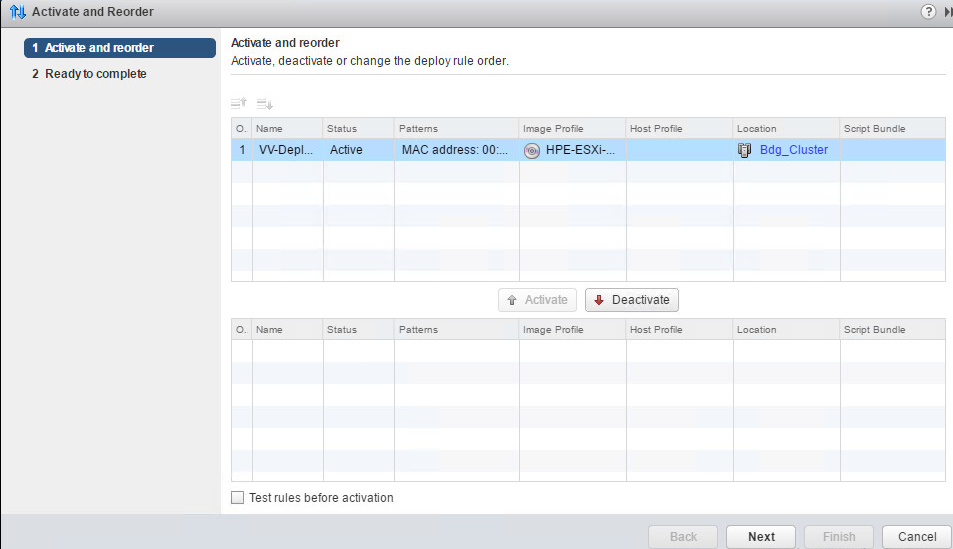
One thought on “VMware Auto Deploy Configuration in vSphere 6.5”
Hi – Is this possible, if the client has SCCM infrastructure?
I tried and configured Software Dept, Profile and Rule. Was trying to boot ESXi virtual machine – it is not working for me. I am able to pxe boot but it pick up WIM boot file and not the vmware boot file that, I configured as 067 on DHCP server.
Thanks
Ram
Comments are closed.